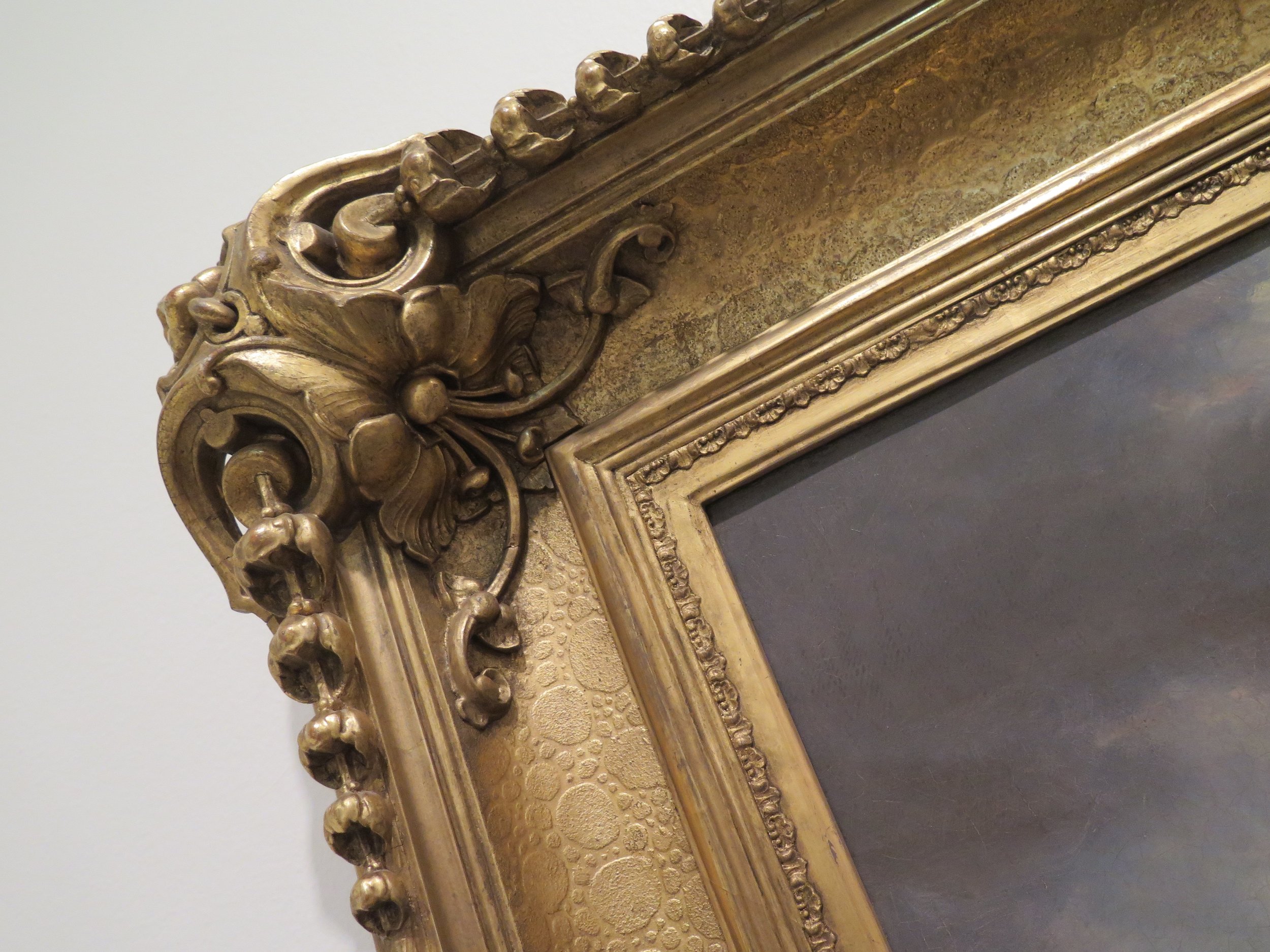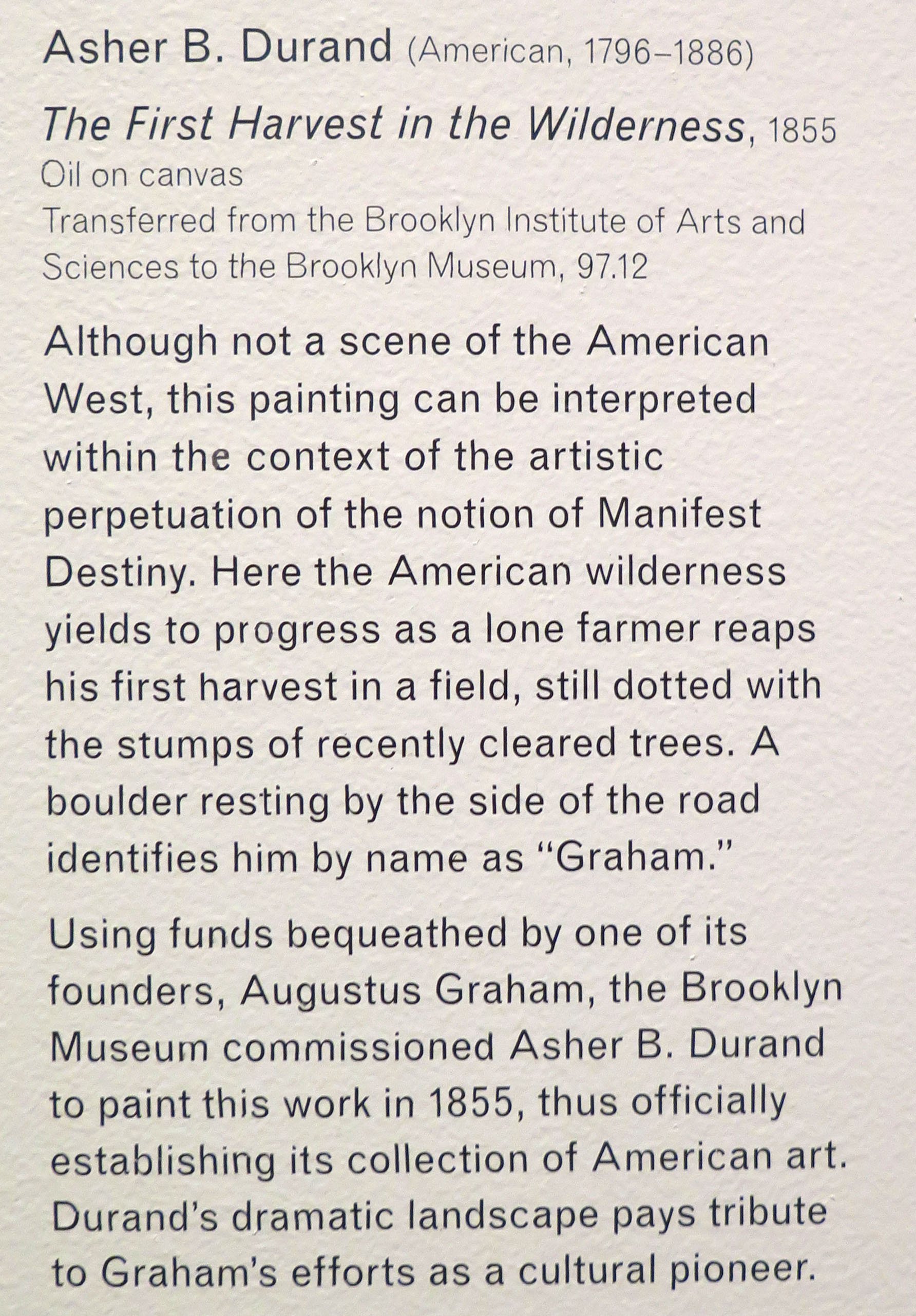ASHER BROWN DURAND

ASHER BROWN DURAND (1796–1886)
“View Near Rutland, Vermont,” 1837, oil on canvas, 29-1/4 x 36-1/4 in. Framed by Gill & Lagodich for the High Museum, Atlanta, GA. Custom-made replica c. 1840s American frame, molding width 4-3/8 in. “Among the first American painters to dedicate himself to landscape, Asher Brown Durand was best known for his detailed renderings of America’s natural bounty. His early work as a watchmaker and engraver accounts for his fine, linear style. This quiet picnic scene boasts a romantic and lyrical spirit: the precisely rendered foliage and expansive vantage point express the beneficence of nature, a common theme among nineteenth-century landscape painters.” —museum label. Painting: Purchase with funds from Mrs. J. Mack Robinson.




ASHER BROWN DURAND (1796 – 1886)
Welch Mountain, 1863, oil on canvas, 20-3/4" x 30-1/4" Framed by Gill & Lagodich for the Nelson-Atkins Musuem of Art: period American frame, gilded applied composition ornament on wood, . “Asher B. Durand evoked the philosophical idea of the Beautiful in the harmony, serenity and loveliness of this pastoral landscape of Welch Mountain, New Hampshire. He achieved these qualities by depicting the foreground with a fine brush to give remarkable detail, rendering the middle ground more sketchily and incorporating a number of flat, broadly painted areas of soft lavenders and blues in the background. Bright light and shadow play across the entire view, which is enveloped in a hazy atmosphere. A successful engraver, Durand did not turn to painting as a career until he was 40. After Thomas Cole's death in 1848, he became the acknowledged leader of the group of American landscape painters commonly called the Hudson River School.” —museum label. Painting Purchase: William Rockhill Nelson Trust.

ASHER BROWN DURAND (1796—1886)
First Harvest in the Wilderness, 1855, oil on canvas, 31-5/8 x 48-1/16 in. Original 1850s American frame, gilded applied composition ornament and stenciled sandwork on wood, restored by Gill & Lagodich. “Although not a scene of the American West, this painting can be interpreted within the context of the artistic perpetuation of the notion of Manifest Destiny. Here the American wilderness yields to progress as a lone farmer reaps his first harvest in a field, still dotted with the stumps of recently cleared trees. A boulder resting by the side of the road identifies him by name as “Graham.” Using funds bequeathed by one of its founders, Augustus Graham, the Brooklyn Museum commissioned Asher B. Durand to paint this work in 1855, thus officially establishing its collection of American art. Durand’s dramatic landscape pays tribute to Graham’s efforts as a cultural pioneer.” —museum label



